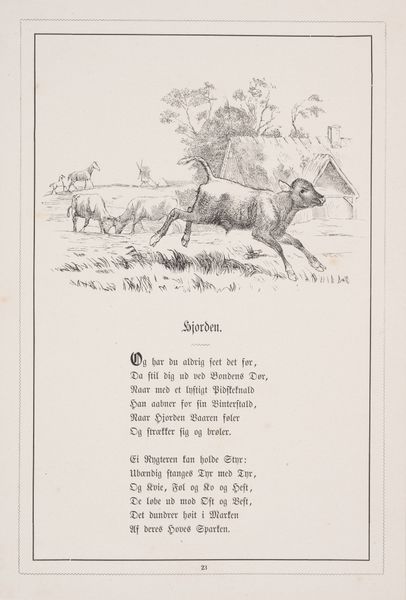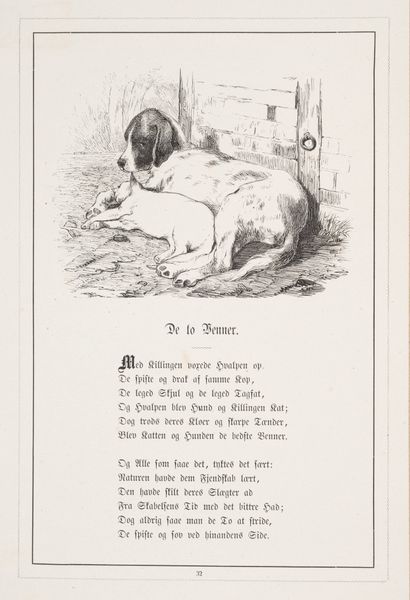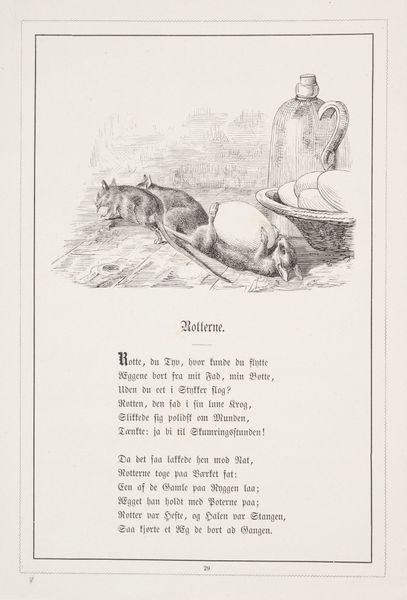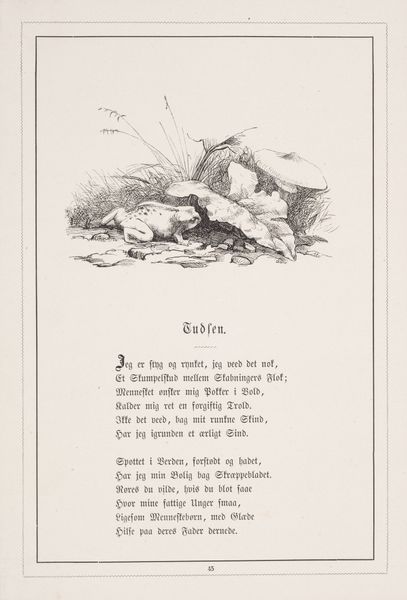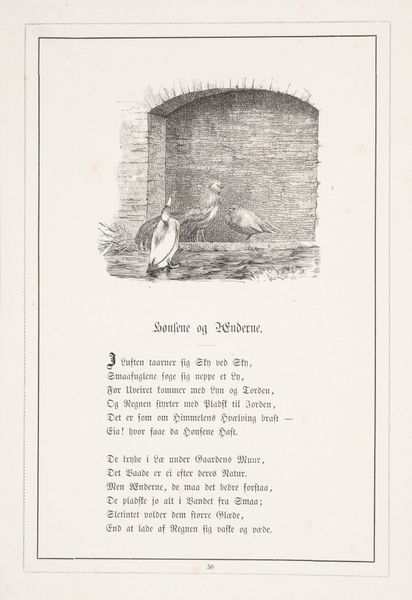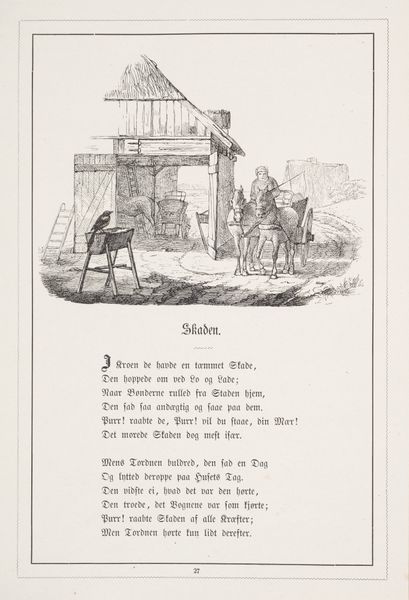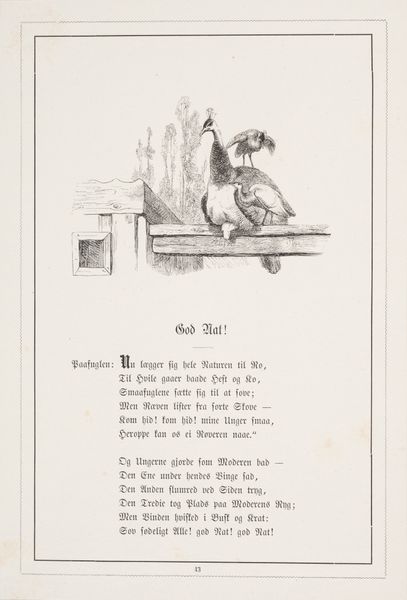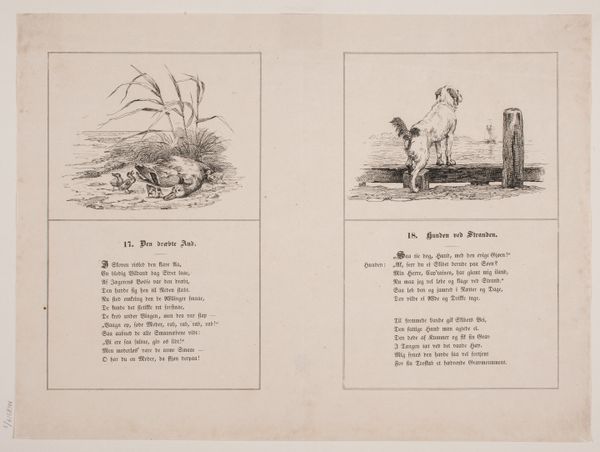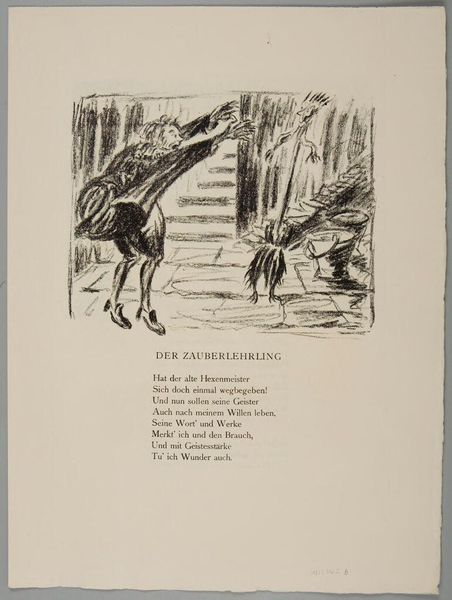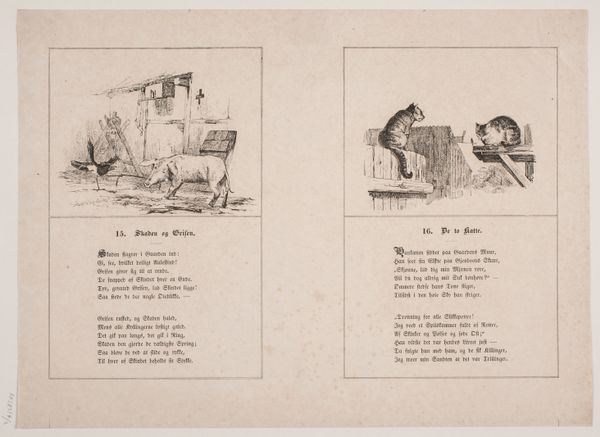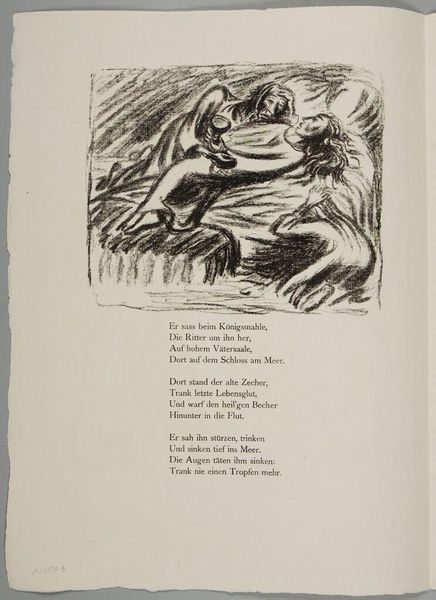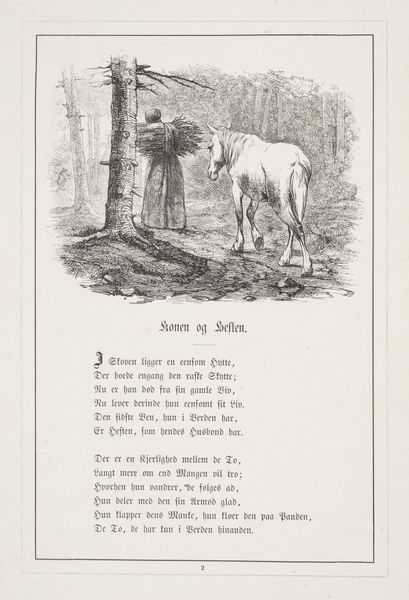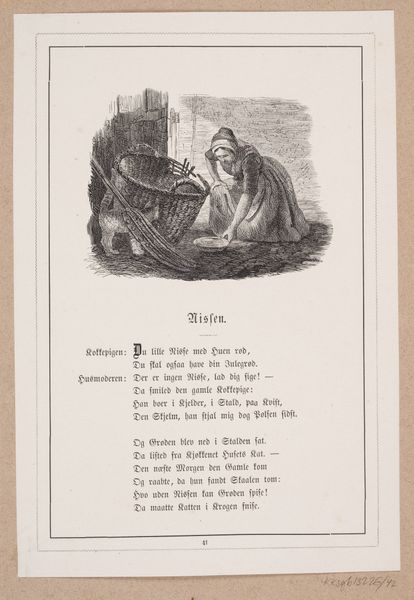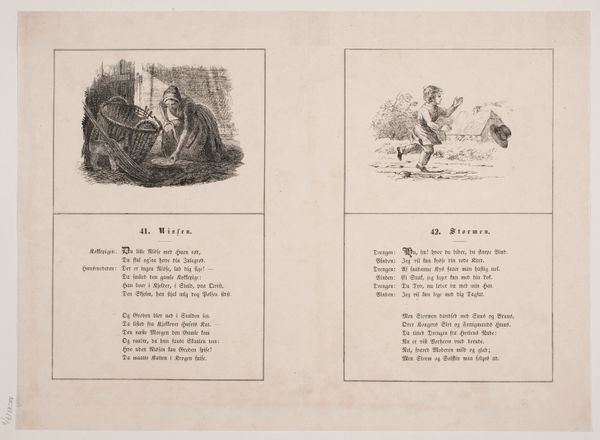
Vædderen og Grisen. Illustration til H.V. Kaalund, "Fabler for Børn" 1866
0:00
0:00
drawing, print, etching, ink
#
drawing
#
narrative-art
#
animal
# print
#
etching
#
ink
#
folk-art
Dimensions: 220 mm (height) x 147 mm (width) (bladmaal)
Editor: This is "Vædderen og Grisen," or "The Ram and the Pig," an etching and ink drawing by H.P. Hansen from 1866. It's an illustration, and I’m struck by the almost comical tension between the two animals. The stark contrast in texture and form is also quite interesting. What stands out to you? Curator: The image offers an excellent exercise in formal analysis. Consider the linework: Hansen employs etching to define shape and create areas of contrasting light and shadow. How do these elements interact to guide the viewer’s eye, and ultimately, what underlying structure emerges from this dynamic interplay? Editor: So, focusing on how the lines and shapes create meaning…I see the ram is much larger, more aggressively detailed with harsher, darker lines, creating a sense of power. The pig is smaller, rendered with lighter, softer lines, which makes it appear more vulnerable. Is that the structure you mean? Curator: Precisely. Notice, also, the interplay between positive and negative space. The background is sparsely detailed, drawing the focus squarely onto the ram and pig. Consider how this strategic void contributes to the work's overall tension and narrative clarity. Does it emphasize one over the other? Editor: Yes, it seems like it's all about highlighting the conflict between them, pushing them forward. I guess I was too focused on the story to see how the technique supports it. Curator: Formal elements never function in isolation. Here, line, form, and space coalesce to create an allegory of power dynamics and perhaps a commentary on innocence versus experience. Reflect on how the materiality of etching—its capacity for precise, reproducible lines—serves the artist's conceptual goals. What does that say about illustrations in the nineteenth century? Editor: I hadn't considered the role of etching itself. This close look makes me see the intentionality behind every stroke. Thanks for sharing this insightful perspective!
Comments
No comments
Be the first to comment and join the conversation on the ultimate creative platform.
